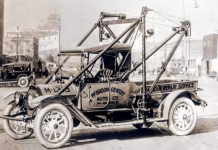A Cultural Heritage: The American Cowboy. The history of the American cowboy is deeply intertwined with the expansion and development of the United States, particularly in the 19th century.
The cowboy tradition has its roots in the Spanish vaquero tradition. When the Spanish arrived in the Americas, particularly in what is now Mexico, they brought cattle and their ranching techniques. The term “cowboy” itself comes from the Spanish “vaquero,” which means cowman.
As Americans moved westward, especially after the Mexican-American War (1846-1848), they adopted and adapted the vaquero techniques. The open range system of cattle ranching became prevalent.
The period from the end of the Civil War in 1865 to the late 1880s is often considered the heyday of the cowboy. This was when vast cattle drives from Texas to rail-heads in Kansas became common, driven by the demand for beef in the East.
Cowboys would drive large herds of cattle over hundreds of miles. These drives were tough, fraught with dangers like stampedes, river crossings, and sometimes hostile encounters with our First Nations people or cattle rustlers.
This era solidified the cowboy’s image: the wide-brimmed hat, boots with spurs, chaps, and the lasso. Their life was one of solitude, self-reliance, and a unique camaraderie formed on the trail.
The invention of barbed wire in the 1870s allowed landowners to fence off their property, which, along with the expansion of railroads, reduced the need for long cattle drives.
The harsh winters of the late 1880s, particularly the Great Die-Up of 1886-1887, where many cattle died in the cold, combined with overgrazing and a saturated beef market, led to a decline in the open range system.
While the long cattle drives ended, ranching did not. Cowboys continued to work on ranches, managing cattle, but now within fenced pastures.
As a Cultural Heritage, the American Cowboy skills turned into sport with the rise of rodeos, which started as informal competitions among cowboys to now being professional sports showcasing roping, riding, and other cowboy skills.
The cowboy became an enduring symbol of American freedom, rugged individualism, and the spirit of the frontier. This image was popularized by literature, Wild West shows (like Buffalo Bill’s), and later by Hollywood.
American cowboys have influenced everything from fashion (denim jeans, cowboy boots) to music (country and western), and their ethos has been romanticized in countless films, books, and songs.
While the romanticized cowboy of media often differs from historical reality, the core values of hard work, independence, and connection to the land remain central to the cowboy identity.
The history of the American cowboy reflects broader themes of American history: exploration, conflict, adaptation, and the mythologizing of the frontier life. Today, while the traditional cowboy lifestyle has largely transformed, the spirit of the cowboy continues to be celebrated and lives on in various forms across the U.S. and beyond.
Are western cowboys are a dying breed?
In the modern world of today, the sentiment that “western cowboys are a dying breed” echoes through various discussions and cultural portrayals, reflecting both a literal and metaphorical decline in the traditional cowboy way of life.
Efforts to preserve cowboy culture are evident in places like Hawaii with the paniolo, where there’s a conscious effort to maintain traditions through generations. This indicates a recognition of the cowboy as not just a job but a cultural heritage worth saving.
The traditional cowboy lifestyle faces economic challenges. Low salaries, the hard nature of the work, and the allure of urban life contribute to fewer young people taking up the mantle. This shift suggests a literal decrease in numbers of those pursuing traditional cowboy work.
In media and literature, like the references from “Longmire,” there’s an artistic acknowledgment of cowboys as a “dying breed,” which serves to romanticize and mourn the perceived decline of this icon of American heritage.
However, not all views are about decline. Some discussions, especially those seen on social media, argue that cowboys are not so much dying out as they are evolving. The spirit of the cowboy, with its associated values of independence, integrity, and connection to the land, persists in modern ranching, rodeo circuits, and even in broader cultural expressions.
The rodeo circuit, ranch work, and even the cultural identity of being a cowboy continue to thrive in certain communities. This suggests that while the traditional image might be less common, adaptations of the cowboy lifestyle are still very much alive.
Public sentiment indicates that there’s a mix of nostalgia, respect for the tradition, and a recognition of the harsh realities facing modern cowboys. There’s an acknowledgment of the decline in traditional terms but also an appreciation for those keeping the spirit alive in contemporary forms.
While the traditional notion of the western cowboy might be seen as diminishing due to cultural, economic, and lifestyle shifts, the essence and modified forms of cowboy culture persist. They adapt rather than disappear, suggesting that the “dying breed” narrative captures a transformation rather than an end. This nuanced perspective reflects both a respect for tradition and an understanding of cultural evolution. As a Cultural Heritage, the American Cowboy may change somewhat, but it won’t soon be passing away.






